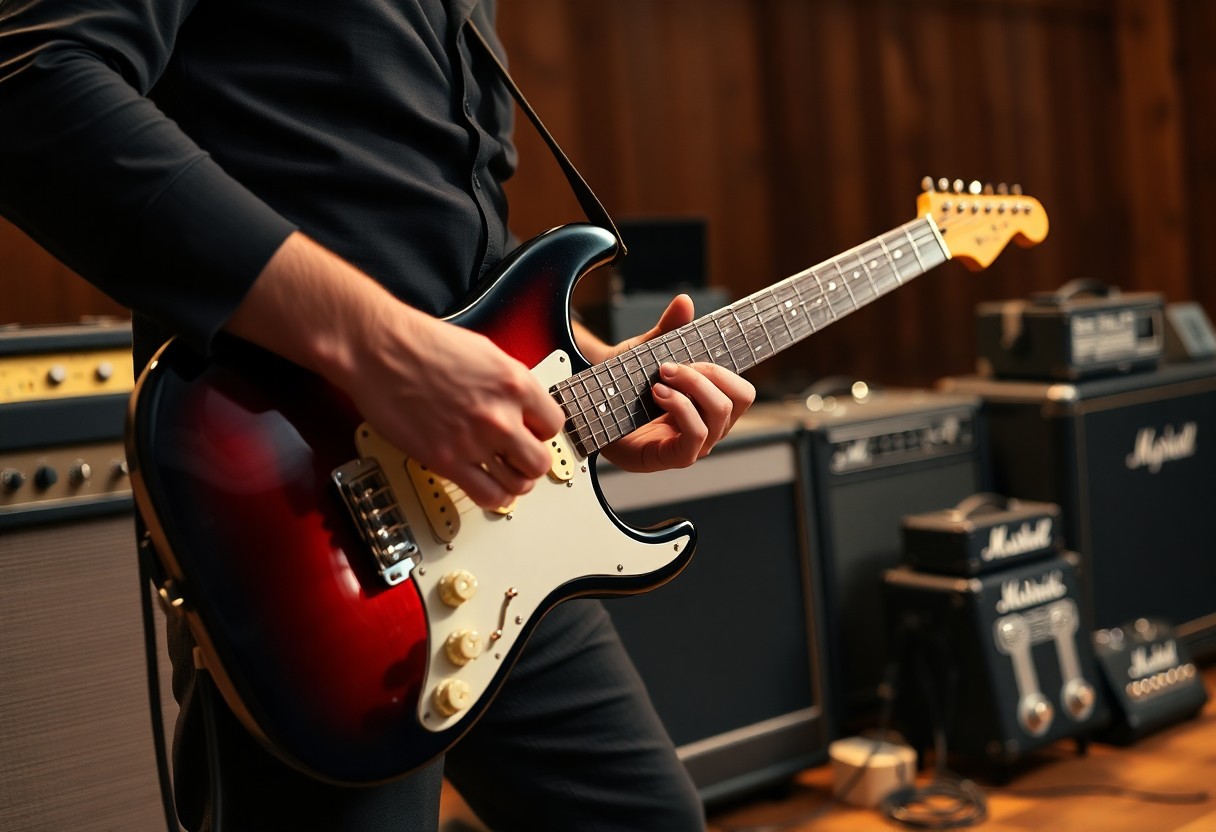Over the years, I have tried countless amplifiers, and finding the right one for your sound can be a daunting task. In this post, I aim to share my insights on various amp models, highlighting their unique features and sound quality. Whether you’re a beginner or a seasoned pro, knowing what to look for in an amp can transform your playing experience. I’ll guide you through common pitfalls and highlights to consider, helping you make an informed choice for your next gear investment.

The Sonic Landscape: How Different Amps Shape Your Tone
Each amplifier introduces unique characteristics that define your sound, from the warmth of a vintage tube amp to the crisp clarity of modern digital models. The differences in circuitry, components, and design philosophy can drastically change how your guitar’s natural voice resonates. By understanding the nuances of various amp types, you can better tailor your rig to suit your musical style and preferences, ultimately enhancing your overall performance and creativity.
The Role of Vacuum Tubes vs. Solid State
Vacuum tube amps are celebrated for their rich, warm distortion and compression, offering a dynamic responsiveness that many players crave. In contrast, solid-state amplifiers provide a cleaner sound and greater reliability. The choice between the two affects not just tonal quality but also your playing dynamics, shaping how you interact with your instrument during a performance.
The Impact of Amp Design on Sound Quality
The architecture of your amplifier influences not only the tone but also the overall sound quality you experience. For example, amplifiers that utilize point-to-point wiring tend to deliver more nuanced and articulate sounds compared to their circuit-board counterparts. Design elements such as speaker size, cabinet material, and even the type of transformer can significantly alter resonance and timbre. This means that two amps with the same tube configuration can produce vastly different tonal profiles based on their build.
In practical terms, a hand-wired tube amp may offer a complex harmonic structure that fills the room with a warmer tone, while a printed circuit board amp might prioritize reliability and low cost, sacrificing some tonal depth. Experimenting with amp designs and configurations is vital for discovering what resonates best with your style. Your choice affects not only your sound but also your overall emotional connection to the music you create, making selection a deeply personal journey for every guitarist.
Decoding Amp Jargon: Essential Terminology for Guitarists
Understanding amplifier terminology is key to making an informed choice. Terms like watts, ohms, and headroom play significant roles in how an amp responds to your playing style. Whether you’re looking for a practice amp or a powerhouse for gigs, familiarizing yourself with these terms will guide you in selecting the right equipment. For more detailed recommendations, check out The 14 best amplifiers for all styles and budgets.
Watts, Ohms, and Headroom: What You Need to Know
Watts measure the amp’s power output, influencing loudness and dynamic range. Ohms relate to speaker impedance, affecting compatibility with your amp. Headroom, which denotes the amp’s capacity to handle peaks without distortion, is crucial for maintaining clarity in your sound, especially at higher volumes.
Understanding Amplifier Classes: A, B, AB, and D
Diving into amp classes reveals how different topologies affect your tone and performance. Class A amplifiers are renowned for their rich, warm tones but tend to be less efficient and produce more heat. Class B amps offer higher efficiency but may sacrifice tonal nuances and can introduce crossover distortion. Class AB is a hybrid, combining the warmth of Class A with the efficiency of Class B, making it ideal for versatility. Finally, Class D amplifiers, often used in bass and PA systems, provide a lighter, more compact option without significantly compromising sound quality, making them a popular choice among performing guitarists.
Navigating the Amp Market: What Every Guitarist Should Consider
Diving into the amp market can feel overwhelming, but focusing on a few key factors will lead you to your ideal match. Start by assessing your musical style, frequency of use, and whether you need portability. Additionally, the amp’s power output significantly impacts its versatility, from bedroom practice to stage performances. Searching for features like built-in effects or USB connectivity can enhance your setup, while knowing what type of tubes or solid-state circuits resonate with your play style will refine your choices further. The amp’s compatibility with your current gear also plays a role in selecting the right one.
Budgeting for Your Ideal Setup
Allocating your budget wisely is vital in your quest for the perfect amp. Start by defining your limit and consider both short-term investments and long-term value. In the world of guitar amplifiers, you’ll find options ranging from a few hundred dollars to several thousand. Exploring second-hand gear can yield high-quality results at a fraction of the cost while ensuring you don’t sacrifice sound quality. Keep in mind that even though cheaper models may save money upfront, investing in quality often pays off in the long run.
Brand Reputation: Legacy vs. Innovation
Brand reputation tells a lot about amp reliability and performance, revealing insights into legacy companies versus innovative newcomers. Companies like Fender and Marshall have been creating iconic amplifiers for decades, celebrated for their rich tones and durability. However, emerging brands like Revv or Victory Amps offer fresh perspectives, focusing on modern features and innovative designs. Knowing which brands back their products with solid warranty programs and customer service can influence your decision significantly.
Expanding on brand reputation, established brands often carry a legacy associated with timeless sounds and industry endorsements. For instance, Fender’s Twin Reverb is revered in multiple genres, proving its worth to guitarists from blues to rock. In contrast, newer brands often attract attention with forward-thinking products designed for today’s guitarist demands, showcasing features like digital emulation and versatile tonal shaping. As trends shift, balancing respected tradition with innovative technology allows you to select an amplifier that not only fits your style but is also backed by a reputable name in the industry.
Real-World Reviews: The Top 5 Amps That Guitarists Swear By
In my quest to discover amplifiers that resonate with guitarists everywhere, I analyzed reviews and sought out the top five amps that even seasoned pros swear by. These models stand the test of time, proving their capabilities in various genres and playing environments. Whether you crave killer clean tones or rich overdrive, there’s an amp on this list that will elevate your performance and inspire creativity.
Comprehensive Review of Each Amp’s Features
Each amplifier on our list boasts unique features tailored to different playing styles. From versatile channel-switching to intuitive controls, I’ve assessed their wattage, speaker configurations, and connectivity options. For instance, one amp may excel with vintage tube warmth, while another may thrive on pristine digital accuracy. Understanding these attributes helps in making an informed choice that complements your sound and playing habits.
Pros and Cons Directly from Guitarists
Pros and Cons of the Top 5 Amps
| Pros | Cons |
|---|---|
| Rich, warm tones | Heavy and cumbersome |
| Versatile sound settings | Can be pricey |
| Durable build quality | Limited onboard effects |
| Intuitive user interface | Requires maintenance |
| Excellent feedback control | Noise at high volumes |
Feedback from guitarists highlights the strengths and weaknesses of these amplifiers, providing invaluable insights. The rich tones and durable build quality are often praised, reflecting their reliability on stage. However, users note that some models can be heavy and costly, which might deter those seeking a more budget-friendly option or portable solution. Being aware of both sides helps you choose an amp that fits your preferences and performance situations.
Tuning Your Setup: Finding the Perfect Match for Your Style
Achieving the optimal sound is all about tuning your setup to match your personal style. From experimenting with amp settings to adjusting your guitar’s tone knobs, every nuance matters. Don’t hesitate to spend time tweaking both your amp and guitar to find that harmonious balance. Consider your preferred genres and how they translate into your tone, experimenting until it feels just right for you. Your unique combination of gear can unlock sound variations that truly speak to your musical soul.
Amp and Guitar Pairing Tips for Various Genres
Different genres call for specific amp and guitar pairings that elevate your performance. Here are a few tips to get you started:
- For rock, a Marshall amp with a Les Paul delivers that powerful punch.
- In blues, a Fender Deluxe and a Stratocaster can give you that crisp, biting tone.
- Experiment with metal by pairing a high-gain Mesa/Boogie amp with an active pickup guitar.
- If you love jazz, try a warm-sounding amp like an AER with a semi-hollow body guitar.
Perceiving the synergy between these elements is vital for achieving the best sound.
The Importance of Effects Pedals in Shaping Your Sound
Integrating effects pedals into your rig takes your sound to another level, allowing creativity to flourish. The right pedals can enhance your tone, add texture, and bring dynamic layers to your performance. From distortion and overdrive to modulation and delay, pedals can dramatically alter the way your guitar interacts with the amp. They establish distinct character in your sound, transforming simple riffs into captivating musical expressions.
Effects pedals provide a wealth of options that enhance tonal versatility. For instance, a delay pedal can add depth, making your solos soar, while a reverb pedal can create a lush, ambient backdrop. Additionally, modulation effects like chorus or flanger add movement and richness to your sound. By carefully selecting and arranging these pedals within your setup, you position yourself to explore an array of sonic landscapes that truly reflect your artistic identity. Whether you’re aiming for subtle enhancements or radical transformations, the right effects setup can serve as a powerful tool in your guitarist arsenal.
To wrap up
From above, it’s clear that amp reviews play an necessary role in guiding guitarists towards their ideal sound. As you explore different amps, consider what aspects are most important for your playing style—whether it’s tone, versatility, or portability. I encourage you to look into these reviews thoughtfully; they can provide insight beyond just specifications and help you make informed decisions. Your gear directly influences your music, so taking the time to understand your options will enhance your overall experience as a guitarist.




